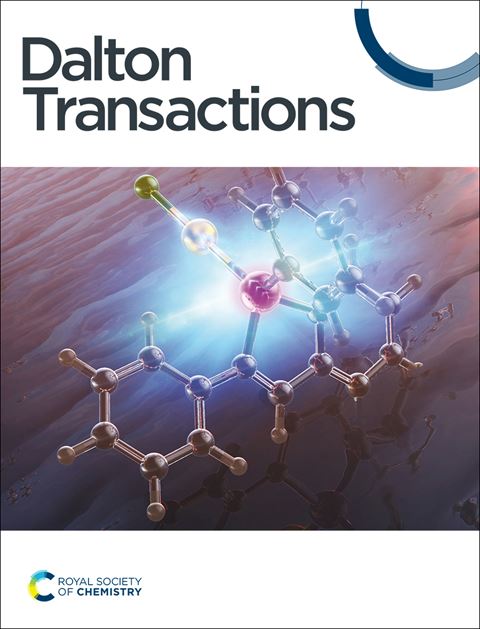用丝氨酸、脯氨酸和天冬氨酸同源物功能化硫化镉量子点,研究配体大小对诱导圆二色性的影响。
IF 3.5
3区 化学
Q2 CHEMISTRY, INORGANIC & NUCLEAR
引用次数: 0
摘要
手性是分子和材料的基本性质,是许多重要化学、生物化学和光学现象的基础。手性有机分子,被称为旋盖配体,已经被证明通过电子和结构相互作用诱导非手性纳米材料的手性,如圆二色性(CD)信号的出现。CD光谱的符号和强度反映了配体的绝对构型和它的结合几何形状,可以通过溶剂、温度、碱、反阳离子和配体的浓度来调节。为了更深入地了解配体诱导的手性,促进手性材料的合理设计,研究分子与纳米材料在固液界面上的相互作用至关重要。在本研究中,我们利用同源氨基酸对:丝氨酸-高丝氨酸、脯氨酸-高脯氨酸和天冬氨酸-谷氨酸,研究了盖层配体大小对胶体硫化镉量子点(CdS QDs)诱导CD光谱的影响。同时,我们利用光谱技术探讨了第三个官能团(附着在非手性碳上)的影响以及锚定羧酸基团与第三个官能团之间的距离。我们的研究结果强调了配体分子结构和足迹(空间需求)对半导体纳米颗粒诱导CD信号的重要作用。本研究进一步强调了圆二色光谱在探测表面结合几何形状、配体表面取向和配体-纳米晶体杂化方面的重要性。本文章由计算机程序翻译,如有差异,请以英文原文为准。
Cadmium sulfide quantum dots functionalized with serine, proline, and aspartic acid homologs to study the influence of ligand size on the induced circular dichroism.
Chirality, a fundamental property of molecules and materials, underlies numerous critical chemical, biochemical, and optical phenomena. Chiral organic molecules, termed capping ligands, have been shown to induce chirality in intrinsically achiral nanomaterials through electronic and structural interactions, as evidenced by the emergence of a circular dichroic (CD) signal. The sign and intensity of the CD spectra have been demonstrated to reflect both the ligand's absolute configuration and its binding geometry that could be tuned by solvent, temperature, base, countercation, and ligand’s concentration. To gain a deeper understanding of ligand-induced chirality and facilitate the rational design of chiral materials, it is crucial to investigate the interplay between molecules and nanomaterials at the solid-liquid interface. In this study, we investigate the influence of capping ligand size on the induced CD spectra of colloidal cadmium sulfide quantum dots (CdS QDs) by using homologous pairs of amino acids: serine-homoserine, proline-homoproline, and aspartic-glutamic acids. In parallel, we explore the impact of a third functional group (attached to the achiral carbon) and the distance between the anchoring carboxylate group and this third functional group using spectroscopic techniques. Our findings highlight the significant role of ligand molecular structure and footprint (steric demand) on the induced CD signal of semiconductor nanoparticles. This study further emphasizes the importance of circular dichroism spectroscopy in probing surface binding geometry, ligand surface orientation, and ligand-nanocrystal hybridization.
求助全文
通过发布文献求助,成功后即可免费获取论文全文。
去求助
来源期刊

Dalton Transactions
化学-无机化学与核化学
CiteScore
6.60
自引率
7.50%
发文量
1832
审稿时长
1.5 months
期刊介绍:
Dalton Transactions is a journal for all areas of inorganic chemistry, which encompasses the organometallic, bioinorganic and materials chemistry of the elements, with applications including synthesis, catalysis, energy conversion/storage, electrical devices and medicine. Dalton Transactions welcomes high-quality, original submissions in all of these areas and more, where the advancement of knowledge in inorganic chemistry is significant.
 求助内容:
求助内容: 应助结果提醒方式:
应助结果提醒方式:


